Everything You Need to Know
Step into the captivating world of San Francisco’s alleyways, where every brick and mural tells a story waiting to be discovered. This blog is your passport to the city’s hidden corners, shedding light on the eclectic tapestry of history, culture, and urban charm woven into these narrow passageways. From the renowned to the overlooked, we’ll delve into the vibrant neighborhoods and distinctive corners that make San Francisco’s alleys a living testament to its character. Whether you’re a local seeking new haunts or a curious traveler eager to delve into the heartbeat of the city, join us as we decode the essence of these intriguing pathways. This is your insider’s guide to unlocking the secrets of San Francisco’s alleys – an exploration like no other.
History of San Francisco’s alleys
The History of San Francisco’s alleys is intertwined with the city’s development and reflects its diverse cultural, social, and economic evolution. San Francisco’s alleys have their origins in the city’s rapid growth during the Gold Rush Era of the mid-19th century. As thousands of fortune seekers flooded into the city, hastily constructed buildings filled the available space, often leaving narrow passages between them. These alleys provided access to residences, businesses, and services in the densely populated city.
During the late 19th century (The Victorian Era), San Francisco experienced a building boom characterized by the construction of ornate Victorian-style homes and commercial buildings.
San Francisco’s alleys played a significant role in the lives of the city’s immigrant communities. In neighborhoods such as Chinatown, North Beach, and the Mission District, alleys provided space for small businesses, social gatherings, and cultural events within close-knit ethnic enclaves. San Francisco’s alleys became focal points for countercultural movements during the 20th century. In the 1950s and 1960s, North Beach and the adjacent alleys were home to Beat Generation writers, poets, and artists who sought inspiration and camaraderie in the bohemian atmosphere of the neighborhood.
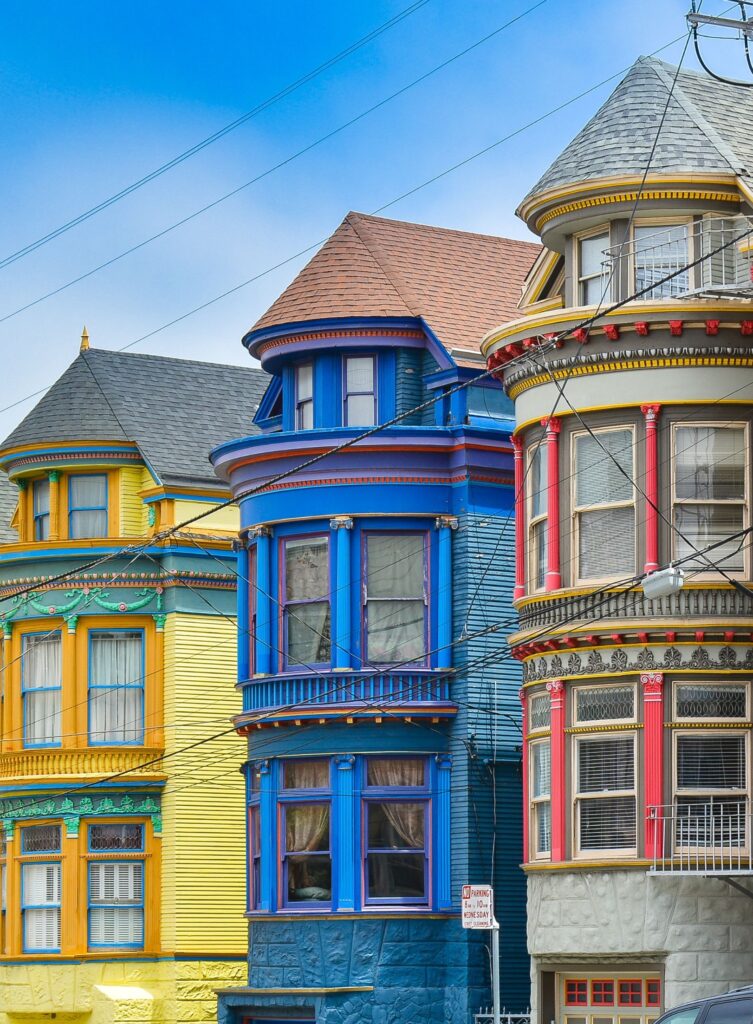
Today, San Francisco’s alleys continue to serve as vibrant urban spaces that reflect the city’s history, culture, and community spirit. From hidden gems tucked away in historic neighborhoods to bustling thoroughfares lined with shops and cafes, the city’s alleys offer a glimpse into its past and present.
The History Behind San Francisco’s Murals
The history of murals in San Francisco is deeply intertwined with the city’s cultural, social, and political fabric. Here’s a brief overview of the history behind San Francisco murals:
- Great Depression Era: San Francisco’s mural tradition began during the 1930s as part of President Franklin D. Roosevelt’s New Deal programs, which aimed to provide employment for artists and beautify public spaces. Coit Tower, completed in 1933, features a series of murals painted by artists hired through the Public Works of Art Project (PWAP) and the Works Progress Administration (WPA). These murals depict scenes of California life, labor, and industry.
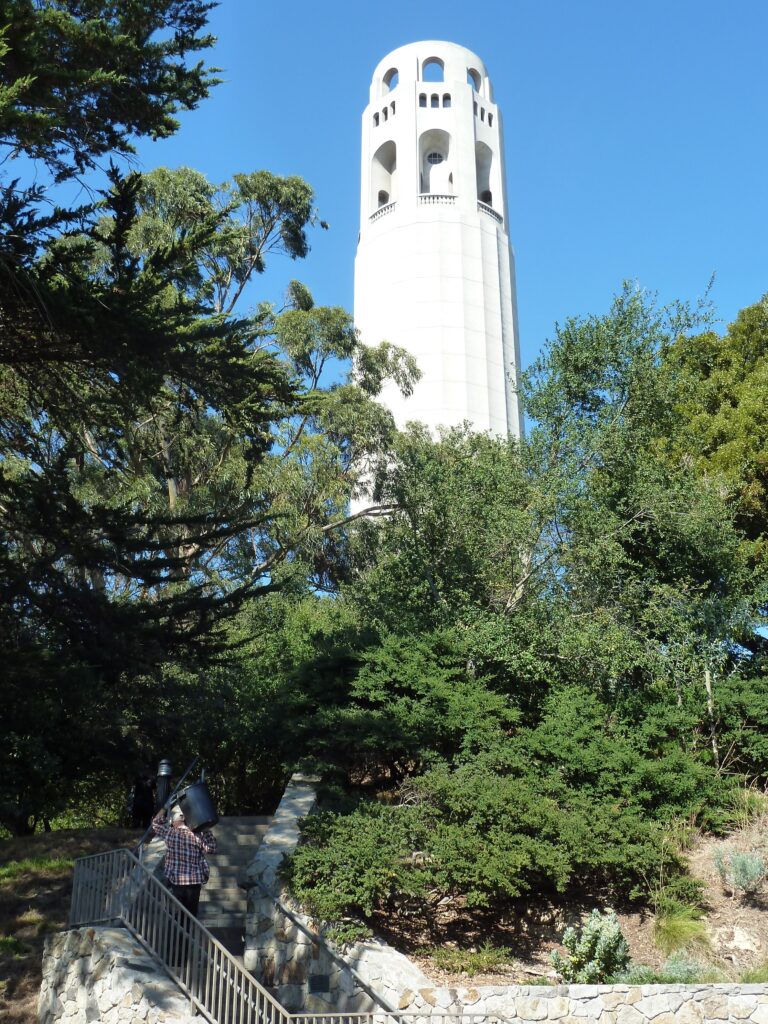
- Chicano Mural Movement: In the 1960s and 1970s, the Chicano Movement in San Francisco led to the emergence of murals as a form of cultural expression and political activism. Chicano artists, inspired by the Mexican muralists such as Diego Rivera and David Alfaro Siqueiros, used murals to assert their cultural identity, advocate for social justice, and celebrate their heritage. The Mission District, with its large Latino population, became a focal point for this mural movement.
- Community Murals Movement: The 1970s also saw the rise of the community murals movement in San Francisco. Artists, community organizers, and residents collaborated to create murals that reflected the unique character and concerns of their neighborhoods. Murals became a means of reclaiming public space, preserving local history, and fostering community pride.
- Political and Social Commentary: Over the years, San Francisco murals have served as a platform for political and social commentary, addressing issues such as racism, poverty, gentrification, environmental justice, LGBTQ+ rights, and police brutality. Murals have been used to amplify marginalized voices, challenge dominant narratives, and inspire collective action.
- Tourist Attractions and Cultural Landmarks: Today, San Francisco’s murals are not only celebrated for their artistic merit but also valued as tourist attractions and cultural landmarks. Murals such as the Maestra Peace at the Women’s Building, the murals of Balmy Alley, and the works in Clarion Alley have become iconic symbols of the city’s cultural diversity, creativity, and progressive values.
Overall, the history of San Francisco murals reflects the city’s rich cultural heritage, its tradition of activism and social change, and the enduring power of art to transform public spaces and inspire communities.
Where can you find San Francisco’s most famous murals?
San Francisco is home to numerous famous murals, many are concentrated in specific neighborhoods known for their vibrant street art scenes. Here are some of the city’s most famous murals and where you can find them:
- MaestraPeace Mural – Located on the Women’s Building at 3543 18th St in the Mission District, this monumental mural celebrates the achievements of women throughout history and is one of the largest feminist murals in the world.
- Coit Tower Murals – Inside Coit Tower at 1 Telegraph Hill Blvd, you can find a series of murals created during the Great Depression by artists employed by the Works Progress Administration (WPA). These murals depict scenes of California life and labor.
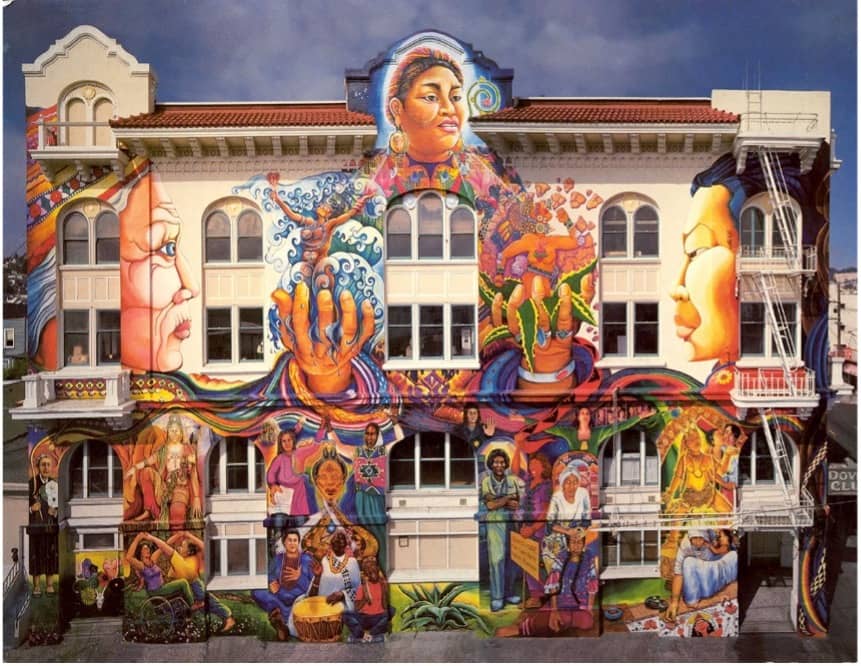

- Balmy Alley – Located between 24th and 25th Streets in the Mission District, Balmy Alley is known as “The Street of Murals” and features a dense concentration of murals addressing various social, political, and cultural themes.
- Clarion Alley – Situated between Mission and Valencia Streets in the Mission District, Clarion Alley is famous for its ever-changing collection of murals created by local artists. The murals here often reflect contemporary social and political issues.
- The Tenderloin National Forest – This community green space located at Cohen Alley between Ellis and Eddy Streets in the Tenderloin neighborhood features murals celebrating nature, urban renewal, and community spirit.
- 24th Street Mini Park – Also known as “Garfield Square,” this park at 24th and Treat Streets in the Mission District is adorned with murals depicting scenes of Latino culture and history.

- Market Street Railway Mural – Located at 1453 Market Street, this mural painted on the side of a building depicts the history of San Francisco’s streetcar system and is visible to those traveling along Market Street.
These are just a few examples of San Francisco’s famous murals, but the city is filled with many more scattered throughout its neighborhoods, each offering its unique artistic expression and cultural significance.
Whether you are a SF local or a visitor, and you want to immerse yourself in the food, history, and architecture of some of the city’s most iconic neighborhoods, these are some of our personal recommended walking tours with your own personal and experienced SF tour guide:
- Mission District Food & History Walking Tour
- Chinatown Food & History Walking Tour
- Little Italy (North Beach) Food & History Walking Tour
Mission District Food & History Walking Tour (3.5-hour tour)
Includes
- Narrated food and history walking tour of Mission District
- Plenty of stops with Photo opportunities, such as Mission Dolores Park, the Balmy Alley, etc.
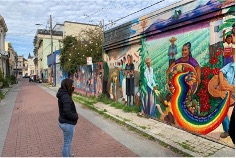
- Food tastings (Mexican Oaxaca food / second stop that could be Tacos / Pastry / Coffee)
- Entrance fee to Mission San Francisco de Assis
- Stroll through the streets of Mission District, enjoy its different architecture styles, sculptures and its traditional shops and old theaters.
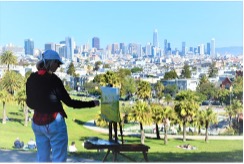
Chinatown Food & History Walking Tour (2-hour tour)
Includes
- Narrated walking tour of Chinatown with Food included on your tour: Pork Buns & Spring Rolls or Carnival Buns at iCafe or Hang Ah, Delicious Dim Sum, Fortune Cookies
- Plenty of stops with Photo opportunities, such as The Dragon’s Gate, The Old Cathedral of St. Mary of the Immaculate Conception, Portsmouth Square, Golden Gate Fortune Cookie Factory
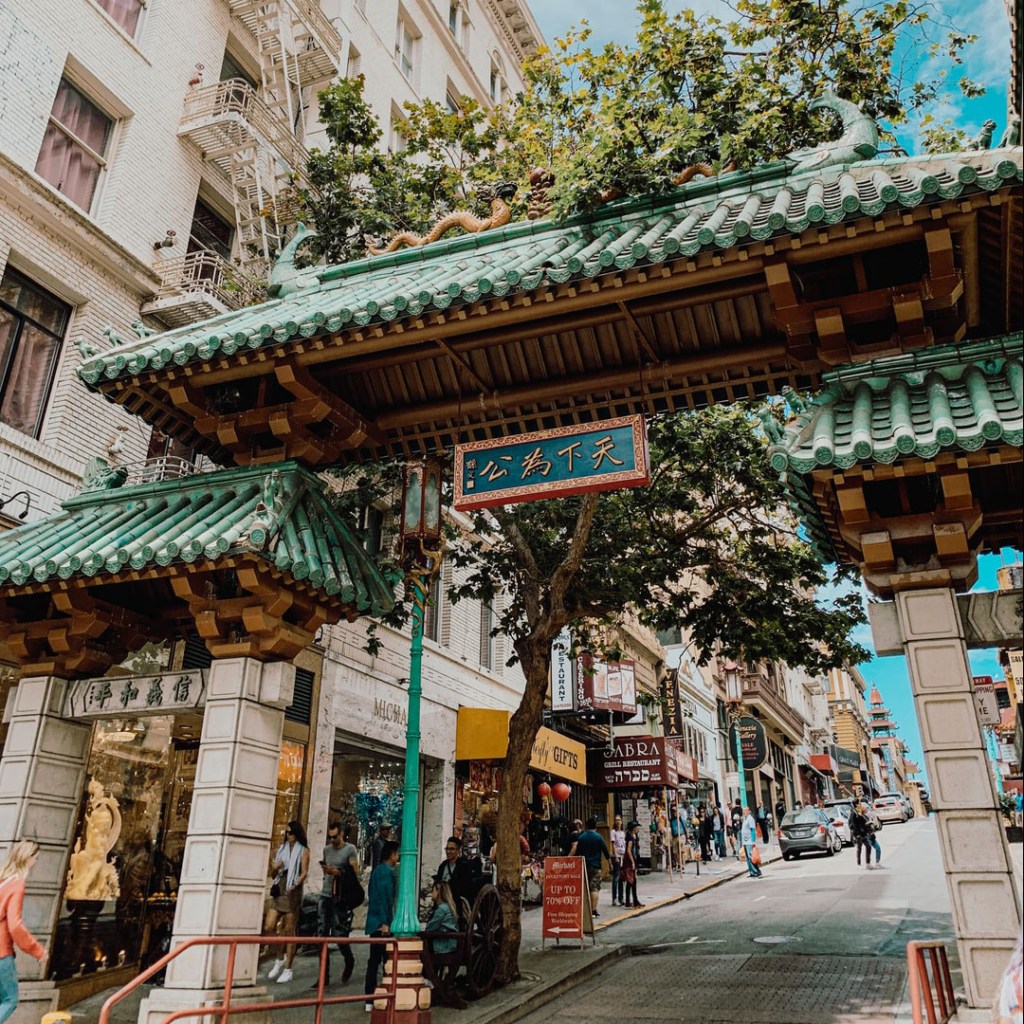
Little Italy (North Beach) Food & History Walking Tour (2-hour tour)
Includes
- Narrated food and history walking tour of North Beach (Little Italy)
- Food tastings (Antipasti & Pizza / Focaccia), Italian Cookies and Coffee
- Plenty of stops with Photo opportunities, such as Jack Kerouac Alley, Mona Lisa Italian Restaurant (Antipasti taste), The National Shrine of Saint Francis of Assisi, Washington Square, etc.
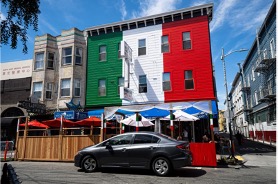
Exploring San Francisco’s alleys and murals is an excellent way to immerse yourself in the city’s vibrant street art scene and uncover hidden gems tucked away in its neighborhoods.
These 3 tours itineraries will give you a comprehensive overview of San Francisco’s alleys and murals, allowing you to experience the city’s rich artistic culture firsthand. Don’t forget to wear comfortable walking shoes and bring a camera to capture the vibrant street art and food scene at some of the San Francisco’s most iconic neighborhoods!